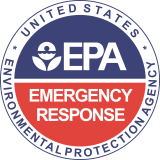Background

On January 7, 2025, a series of catastrophic wildfires developed in Los Angeles County. EPA worked as part of an all-of-government response to these wildfires, tasked with removing hazardous materials from nearly 14,000 affected properties.
On January 14, the Federal Emergency Management Agency (FEMA) assigned EPA to assess, remove, and safely dispose of hazardous materials from all burned areas. This work—done in close coordination with the California Department of Toxic Substances Control—Phase 1 of the federal cleanup response was free to residents.
On January 16, EPA’s first teams began assessing burned properties in the Eaton and Palisades fire burn areas. Teams from California’s Department of Toxic Substances Control worked with EPA as part of the unified response. All work was done in close coordination with other state, county, and local government partners.
On January 27, EPA's teams began collecting household hazardous materials from burned properties. As part of EPA’s Phase 1 hazardous materials removal operations, EPA set up two staging areas (Lario staging area and Topanga Canyon Blvd staging area). Staging areas are used to sort and process hazardous materials for shipment to appropriate disposal facilities. Materials include: paint, paint thinners, pool chemicals, oils, pesticides, cleaners, solvents and other items. Materials arrive at and leave the site in sealed containers.
On February 5, EPA set up an additional staging area in the parking lot of Will Rogers State Beach. This was used for temporary storage of hazardous materials collected from the Palisades fire burn footprint. The parking lot at the Will Rogers State Beach staging area received lithium-ion batteries from power walls, electric and hybrid vehicle batteries, and other sources of these battery types for the Palisades fire burn footprint. All work at this staging area followed EPA’s best management practices for safety.
On February 8, EPA and the County of Los Angeles signed a lease agreement for an additional staging area at the Altadena Golf Course for the temporary storage of hazardous materials collected from the Eaton fire burn footprint. Like the other staging areas, all operations followed EPA’s best management practices for safety. An additional area in Altadena was used by EPA at Farnsworth Park as a support area for vehicle parking and storage of supplies.
Track the progress of EPA’s efforts via the Wildfire Response Story Map.
Learn more from Federal Emergency Management Agency, USA.gov, and the State of California.
